Are you looking to blend the boldness of street art with the elegance of hand lettering? Graffiti calligraphy is a unique mix that does just that. This guide will show you how to start creating your own graffiti calligraphy, using tools like flat pens and chisel tip markers.
Keep reading for a step into this vibrant world.
Defining Calligraffiti
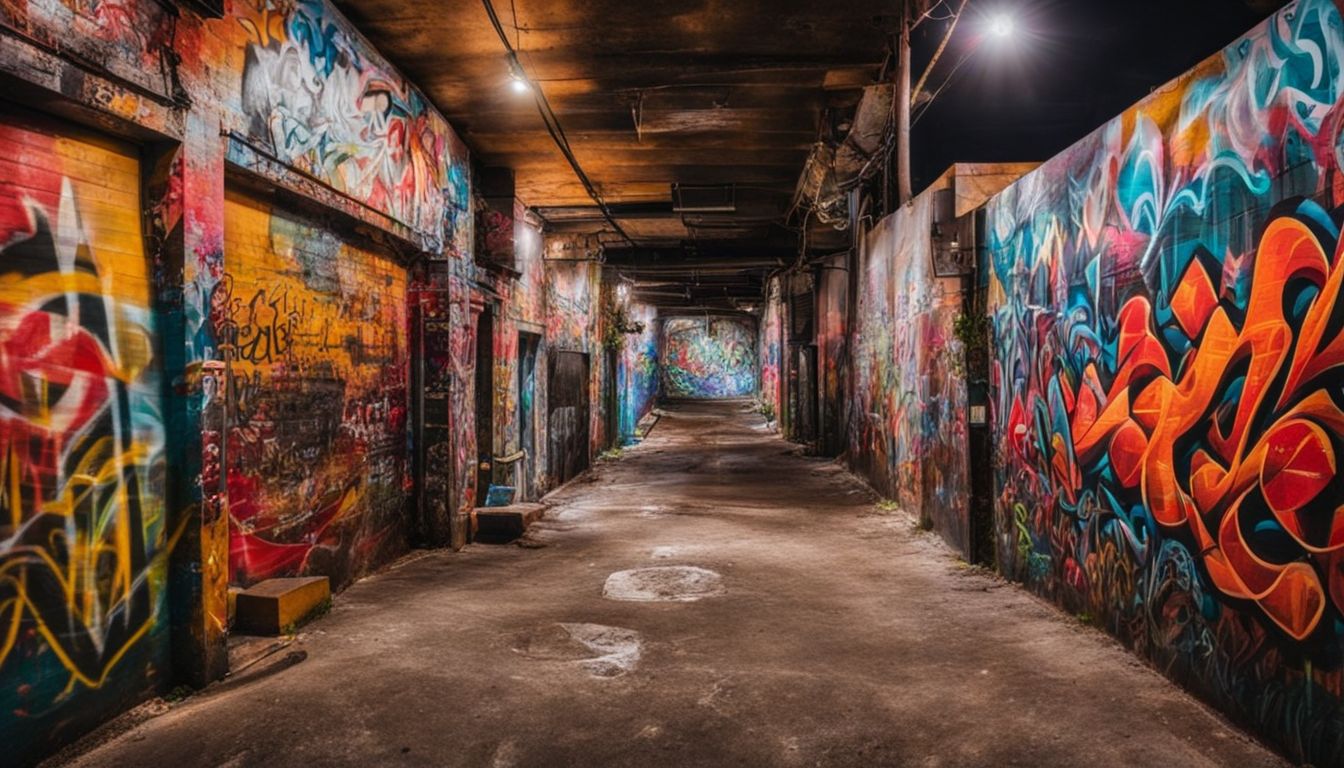
Calligraffiti combines graffiti and calligraphy, blending the urban edginess of street art with the grace of hand lettering. The combination results in expressive and dynamic compositions that add a unique flair to public spaces.
Characteristics of Calligraffiti
Calligraffiti blends the beauty of calligraphic art with the raw energy of graffiti art, creating a unique form that thrives on creative freedom. This art form stands out because it doesn’t follow strict rules like traditional calligraphy.
Artists in this field, such as Niels Shoe Meulman and El Seed, leverage their vision to reshape and deconstruct letters in ways that convey deep messages. They draw inspiration from various movements, including the abstract movement in the Middle East and influences from hurufiyya movement artists like Shakir Hassan Al Said.
The ability to creatively reinterpret letters is central to calligraffiti, allowing for personal expression beyond conventional boundaries. This means artists can play with letter forms, stretching and twisting them into new shapes while maintaining readability or opting for complete abstraction.
Tools used are as diverse as the artwork itself; spray paints, markers, and brushes all find their place here, offering different textures and effects. The influence of Arabic calligraphy is evident in works by Hassan Massoudy and Yazan Halwani, who integrate aspects of Islamic tradition into their pieces.
Tools Used in Calligraffiti
Creating stunning calligraffiti art begins with owning the correct tools. These instruments are a boon for artists who take efforts to merge traditional calligraphy with the boldness of graffiti.
- Essential tools like Flat pens such as the Pilot Parallel are indispensable for both beginners and veterans. Their thick, uniform strokes are ideal for Gothic and Arabic styles.
- Automatic pens provide a greater range in stroke breadth, enabling dynamic variations in lettering.
- Chisel tip Sharpies act as a fantastic substitute when engaging with larger surfaces or outdoor tasks. Their longevity makes them perfect for street art pursuits.
- Implementing a 6MM Pilot Parallel can significantly polish control over letter breadth and spacing, which is vital for making visually pleasing compositions.
- Grunge techniques gain from non-conventional tools like sponges or old toothbrushes to bestow texture and depth to artworks.
- Ensuring initial practice of fundamental letterforms on paper before transitioning to walls or canvases helps to foster muscle memory and assurance in stroke execution.
Using these tools immensely improves an artist’s capacity to communicate messages through calligraffiti, amalgamating elements of graphic design, Islamic art, and cultural symbols into unified visual narratives.
Basic Techniques in Graffiti Calligraphy
Mastering basic techniques is crucial in graffiti calligraphy. Familiarize yourself with Fraktur majuscules and practice stroke abstraction to create visually striking compositions.
Familiarity with Fraktur Majuscules
Exploring Fraktur Majuscules opens avenues for experimenting with attention-grabbing calligraffiti. These uppercase characters are marked by unique strokes, making them ideal for artistic ventures in street art and hand lettering.
The style, tracing back to Western calligraphy, offers a contrast that harmonizes well with the fluidity of Arabic calligraphy, showcasing the variety of script art forms worldwide.
Jake Rainis provides an appealing tutorial for novices excited to experience this craft. His instruction is packaged in a detailed 100-page workbook and a four-part post series. This resource enlightens learners about the basics and keeps them engaged by introducing elements from various cultures, such as Arabian touches observed in the Hurufiyah Art Movement and traditional Islamic scribe work on the Quran.
Through practical engagement, artists begin to understand how Fraktur majuscules can convert their graffiti calligraphy projects into potent illustrations of modern abstract expressionism or personal narratives reflecting stories like those of Etel Adnan or Wijdan Ali.
Stroke Abstraction
When engaging in stroke abstraction within calligraffiti, artists isolate and repurpose Fraktur alphabet strokes to craft original compositions. By merging 2 or 3 distinct strokes, calligraffiti creators unveil the art of blending traditional scripts with contemporary methods.
Employing colors to symbolize different strokes and relationships, this method offers direct involvement in manipulating letterforms to convey distinctive visual narratives.
Exploring Stroke Relationships
When exploring stroke relationships in calligraffiti, artists can experiment by combining 2 or 3 different strokes to create unique and dynamic compositions. This process involves using a 6″x6″ square grid as a foundation to thoughtfully develop various shapes, sizes, tools, and mediums.
By embracing this approach, calligraphers can engage in further development in calligraffiti and refine their artistic styles. The exploration of stroke relationships not only allows for the integration of diverse techniques but also contributes to the ever-progressing realm of calligraffiti artistry.
Incorporating various strokes within a composition enables artists to customize their creations towards more than just simple lettering, unveiling the potential for intricate and personalized pieces.
Mohammed Shakir Hassan Al-Said’s influence during the Arab Spring serves as an inspiration for modern abstract expressionism within this art form, showcasing its practical applications in street art and public displays.
Gothic Calligraphy Fonts in Graffiti Calligraphy
When exploring the world of graffiti calligraphy, adding gothic calligraphy fonts brings a sense of historical elegance to this contemporary art form. Gothic calligraphy, also called Blackletter, showcases strong and angular letterforms that can be customized for artistic expression.
Drawing from early Islamic script styles such as Siyah mashq and Kufic, gothic calligraphy enriches the complexity of calligraffiti compositions. Artists, like Palestinian scribes, have attentively integrated gothic influences into their work, revealing the intricacies of blending traditional script with modern street art.
Contemporary calligraffiti artists not only adopt fundamental letter forms but also aim to go beyond just experimenting with different tools and colors to elevate their pieces. By venturing into this journey and addressing the challenges of combining graffiti elements with fraktur majuscules, creators gain firsthand experience in crafting unique works that support the constantly evolving realm of calligraffiti.
Creating Your First Calligraffiti Piece
Get started on your first calligraffiti piece by following a step-by-step guide and experimenting with different tools and mediums. Add texture and color to your composition, sparking creativity in every stroke.
Join us as we explore the vibrant world of calligraffiti!
Step-by-Step Guide to Your First Composition
To create your first calligraffiti piece, follow these steps:
Start by gathering the necessary tools and materials, such as a Fraktur workbook, calligraphy pens, and suitable paper.
Choose a simple phrase or word to work with, ensuring it aligns with your artistic vision and desired message.
Refer to the Fraktur workbook to understand the specific strokes required for each letter.
Practice forming the letters using stroke abstraction, breaking down each letter into its essential strokes.
Experiment with different compositions and layouts until you find one that resonates with you.
Add texture and color to enhance your composition, following the tutorial’s use of colors to represent different strokes.
Immerse yourself in the process and enjoy translating your ideas onto paper through this captivating art form.
Working with Different Tools and Mediums
When transitioning from creating your first composition, it’s important to familiarize yourself with the various tools and mediums used in calligraffiti. Here’s a detailed look at the essential tools and mediums employed in this art form:
- Pilot Parallel Pens: These flat pens come in various sizes, such as 6mm, allowing for different stroke widths.
- Automatic Pens: Ideal for creating dynamic strokes and lines of varying thickness.
- Chisel Tip Sharpies: Widely used for their versatility in creating bold and precise lines.
- Mixed Media Paper: Offers a sturdy surface for experimenting with different ink types and watercolor effects.
- Acrylic Paints: Perfect for adding vibrant colors and textures to your calligraffiti pieces.
These tools and mediums open up a world of creative possibilities, enabling you to explore diverse techniques and styles within calligraffiti.
Adding Texture and Color
To add texture and color to your calligraffiti piece, consider using grunge techniques and practicing basic letter forms on paper. Experiment with lettering and colors, using them to represent different strokes.
- Explore different textures by using techniques such as splattering paint, layering, or adding rough edges to your letters.
- Experiment with various color combinations to create depth and visual interest in your composition.
- Consider incorporating mixed media elements like stencils or collages to add dimension to your calligraffiti piece.
- Use shading and highlighting techniques to enhance the three-dimensional effect of your lettering.
- Experiment with different writing surfaces such as canvas, wood, or textured paper to create unique textures.
By combining these methods, you can infuse your calligraffiti piece with dynamic textures and striking colors that bring your artwork to life.
Next up: Calligraffiti Styles and Inspirations
Calligraffiti Styles and Inspirations
Aspiring calligraffiti artists draw inspiration from various styles, such as modern abstract expressionism, and incorporate cultural elements into their work. Influential calligraffiti artists provide a wealth of inspiration for those seeking to create unique and culturally significant pieces.
Modern Abstract Expressionism
Emerging from the art scene in the Middle East, modern abstract expressionism has strong ties to calligraffiti. Influenced by the Hurufiyya movement in the Arab world and Saqqa Khaneh movement in Iran, this style takes inspiration from early Islamic script styles like Siyah mashq and Kufic.
Notable works, such as El Seed’s “My name is Palestine,” stand as powerful examples of the impact of modern abstract expressionism on contemporary art culture.
Moving forward with advanced techniques, let’s explore influential calligraffiti artists who have mastered this unique fusion of street art and hand lettering.
Influential Calligraffiti Artists
Mohammad is one of the most influential calligraffiti artists, renowned for his innovative work that combines traditional Arabic calligraphy with graffiti art. His pieces can be seen in cities across the globe and are known for their fusion of cultural elements and modern abstract expressionism.
In addition, El Seed has made a significant impact on the calligraffiti scene with his large-scale public artworks, bridging communities through powerful messages conveyed in intricate calligraphic designs.
Julien Breton, also known as Kaalam, is celebrated for his pioneering use of light calligraphy, integrating photography and performance into his artistic practice. These artists have expanded the boundaries of contemporary street art by incorporating complex Arabic scripts into urban landscapes, inspiring a new wave of creatives to explore the dynamic intersection between tradition and innovation in their own work.
Incorporating Cultural Elements
Transitioning from learning about influential calligraffiti artists to incorporating cultural elements, it’s crucial to recognize how calligraffiti integrates diverse cultural influences into its artistry.
Calligraffiti is a dynamic form of expression that combines traditional script with contemporary urban life and pop culture. This fusion not just captures the essence of global diversity but also serves as a potent medium for social commentary and intercultural dialogue.
The infusion of cultural elements in calligraffiti reflects the rich tapestry of human experience, encompassing themes such as identity, history, and societal dynamics. Through this combination, artists harness their creativity to convey messages that resonate across various ethnicities, languages, and belief systems.
Embracing multiculturalism through calligraffiti empowers individuals to engage with different narratives while celebrating the unity found within diversity.
By integrating symbols, motifs, and linguistic nuances from disparate cultures into their compositions, calligraffiti artists cultivate an environment where mutual understanding thrives.
This approach enables them to surpass geographical boundaries and provide a platform for shared expressions that embody tradition alongside contemporary perspectives. The resulting art forms serve as unifying emblems that promote connections among people from all walks of life.
Practical Applications of Calligraffiti
Take your calligraffiti skills to the streets through public displays and street art. Use it in personal projects or commercially to make a statement.
Street Art and Public Displays
Street art and public displays play a vital role in showcasing calligraffiti. In the Middle East, stunning examples can be found in Monastir, Tunisia, with Tarek Benaoum’s “Two Walls One Boat” masterpiece that incorporates calligraffiti into the local landscape.
Additionally, Egypt’s Manshiyat Naser neighborhood boasts impressive public murals while Djerbahood showcases vibrant works by Inkman and El Seed. Notably, El Seed’s calligraffiti at Gabes mosque is a remarkable fusion of Arabic script and street art that promotes cultural understanding.
Furthermore, the integration of calligraffiti into public spaces reflects its appeal as a form of expression across various cultures. This creates an immersive experience for viewers and fosters appreciation for the intricate blend of traditional calligraphy with contemporary street art styles.
Personal Art Projects and Commercial Use
For personal art projects, calligraffiti provides a platform to express individuality and creativity. Documenting ideas in a sketchbook is essential for progress, and practicing calligraphy skills leads to honing artistic abilities.
Moreover, as artists develop their style, experimenting with scale and proportion helps refine their work.
In terms of commercial use, calligraffiti can be applied to various endeavors such as street art installations or commissioned pieces for public displays. This unique blend of street art and hand lettering provides a versatile tool for creating customized designs tailored to specific preferences.
Ultimately, the practical applications of calligraffiti extend beyond personal projects into the world of commercial design opportunities.
Advanced Tips for Developing Your Style
Refine your style by experimenting with different scales and proportions. Integrate advanced techniques to elevate your calligraffiti artistry.
Experimenting with Scale and Proportion
Experimenting with scale and proportion is a crucial step in advancing your calligraffiti skills. By utilizing various shapes, sizes, tools, and mediums, you can further develop your compositions.
For example, creating a calligraffiti piece using a 6″x6″ square grid allows for a detailed exploration of different proportions and scales. Furthermore, incorporating texture using grunge techniques adds depth to your work.
This exploration opens up new possibilities for creativity while enriching your understanding of composition dynamics. Exploring scale and proportion empowers artists to express their concepts more effectively and captivate viewers with visually engaging pieces.
Moving on to – “Integrative Techniques for Advanced Artists”.
Integrative Techniques for Advanced Artists
Moving from experimenting with scale and proportion, advanced calligraffiti artists include integrative methods to further enhance their art. The fusion of traditional calligraphy scripts with street art techniques allows for the exploration of new dimensions in letter forms and compositions.
This process involves combining diverse styles and tools, such as brush pens, spray paint, and digital mediums to create visually stunning pieces. Advanced artists also blend cultural elements into their work, drawing inspiration from historical calligraphy traditions and contemporary urban influences to produce uniquely expressive calligraffiti pieces.
Incorporating these integrative techniques enables advanced artists to push the boundaries of calligraffiti by infusing their work with a deeper sense of meaning while contributing to the ever-evolving realm of street art.
Conclusion
Graffiti calligraphy art combines street art with hand lettering. This fusion provides artists a distinctive platform to express their creativity without rigid guidelines. By delving into stroke relationships and experimenting with diverse tools and mediums, individuals can cultivate their unique calligraffiti style.
Calligraffiti is not just about visual appeal but also functions as a way for social and political dialogue, promoting awareness within communities. Aspiring artists are urged to embrace the constantly changing world of calligraffiti by exploring its intricacies and unveiling its secrets through direct experience.
FAQs
1. What is graffiti calligraphy?
Graffiti calligraphy is a unique art form that combines street art and hand lettering, creating bold and expressive designs.
2. How can a beginner start with graffiti calligraphy?
A beginner should first learn the basics of both street art and hand lettering before combining them to create their own graffiti calligraphy style.
3. Are there any tools required for practicing graffiti calligraphy?
Yes, you will need specific tools like markers, spray paints, brushes or other writing instruments suitable for large-scale outdoor work as well as smaller detailed designs.
4. Can I make a career out of graffiti calligraphy?
Absolutely! Many artists have turned their passion for this unique blend of street art and hand lettering into successful careers in graphic design, advertising, mural painting and more.
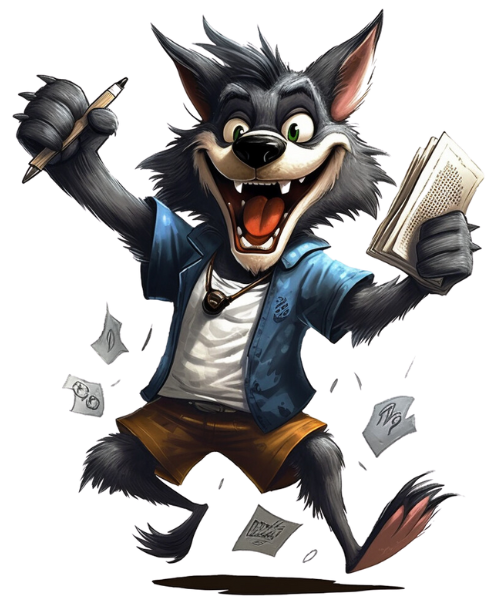
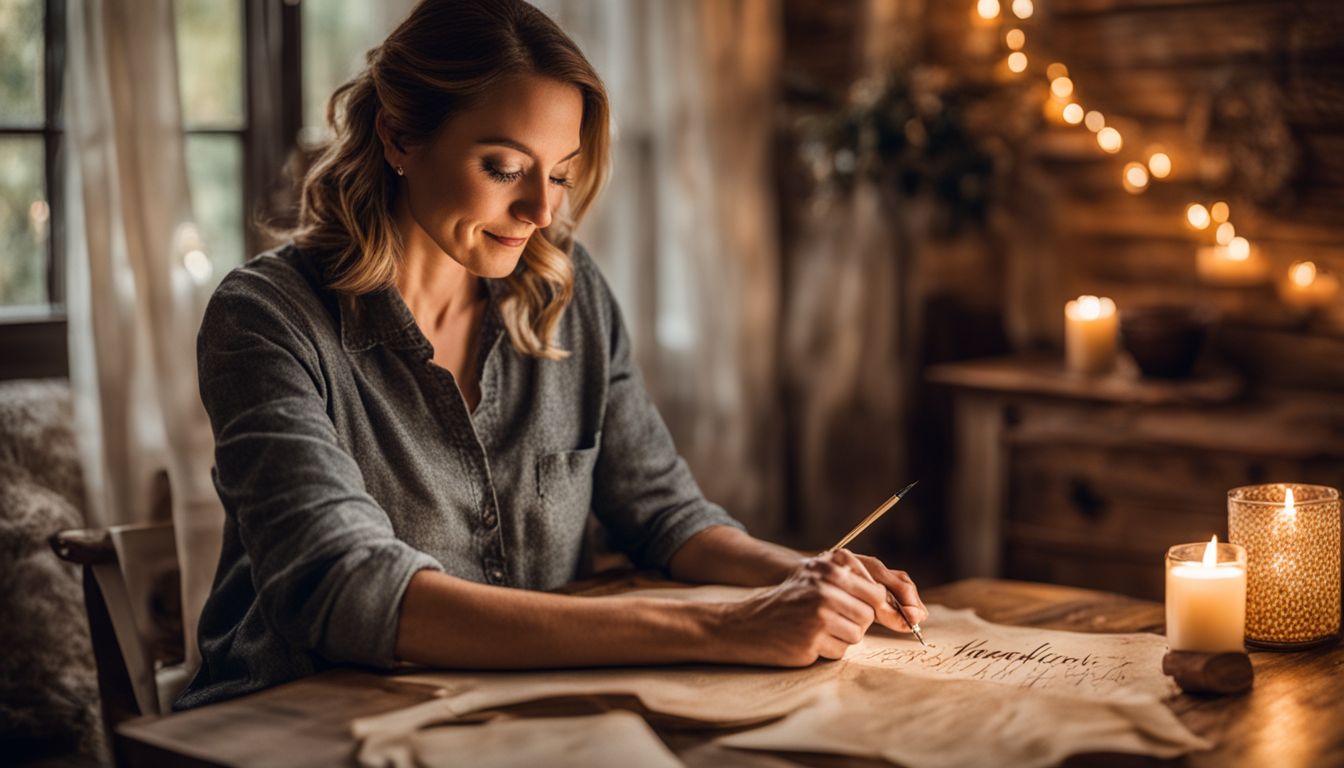
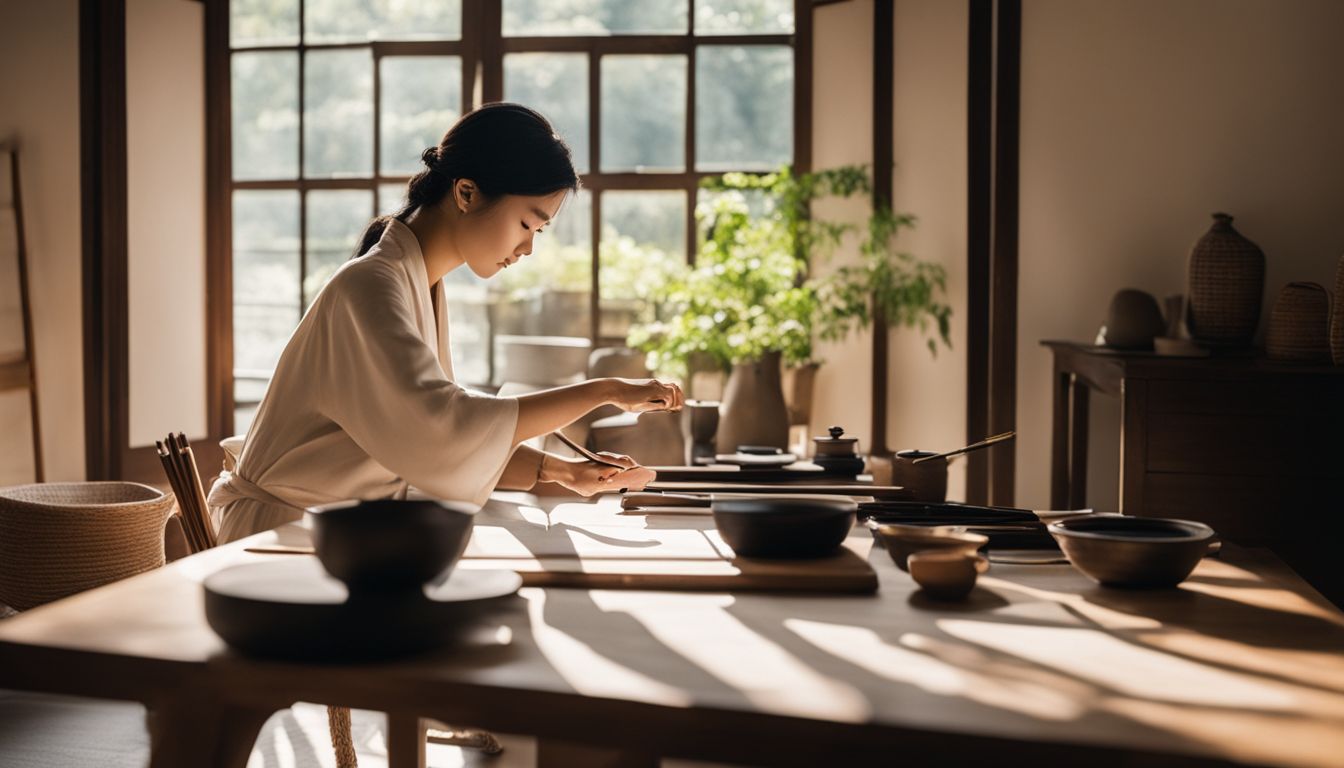
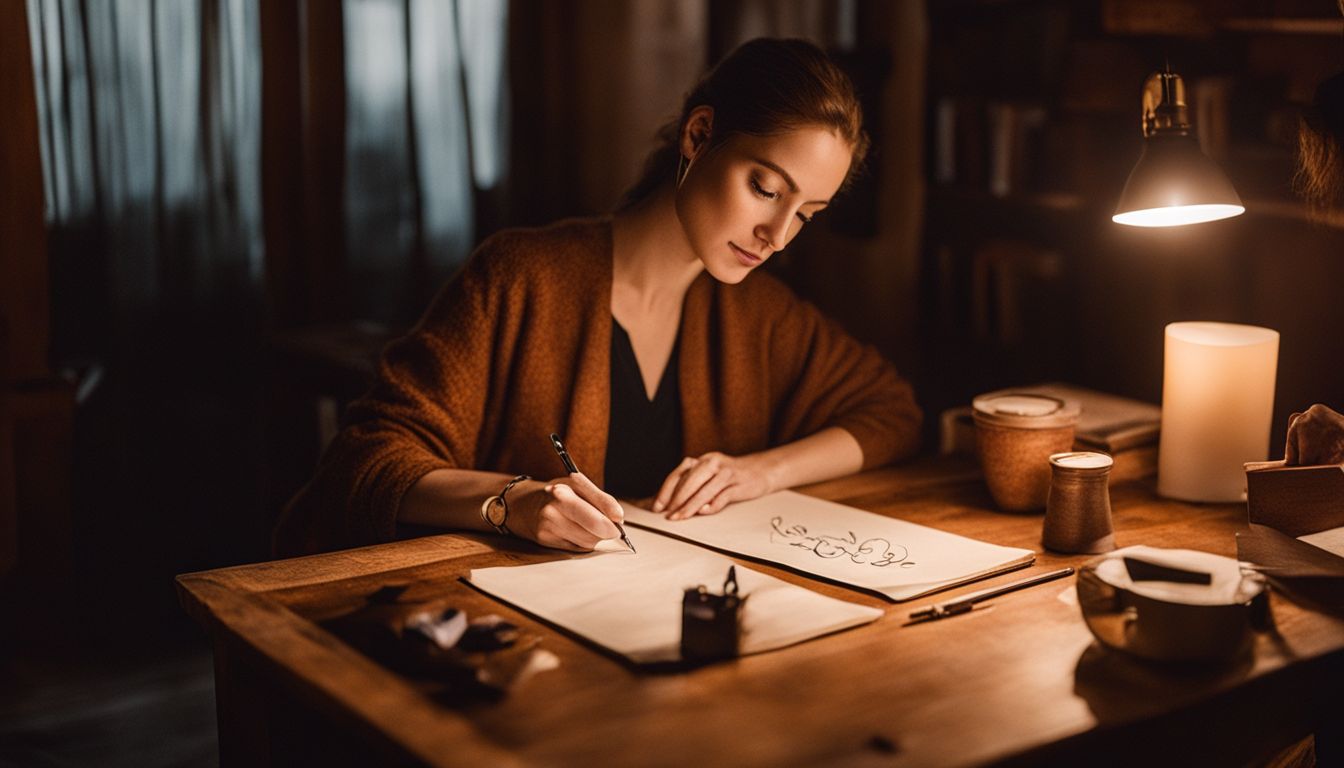
Leave a Reply
You must be logged in to post a comment.